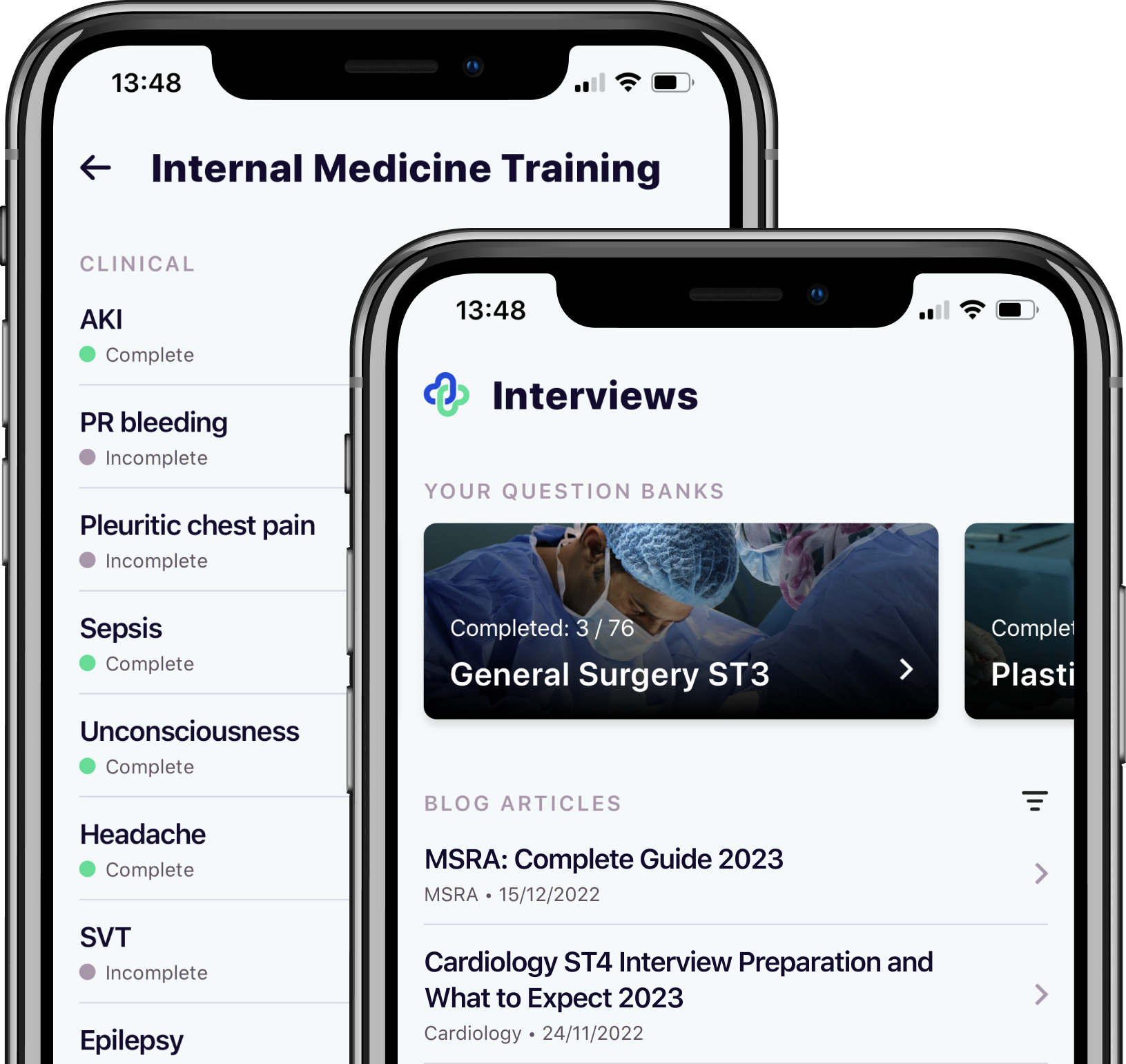
The Internal Medicine Training (IMT) Portfolio: 2025 guide
The days of needing to prepare a physical copy of the ‘dreaded’ internal medicine training portfolio have long gone. However, preparing your portfolio is still good practice when considering applying for internal medicine training.
We recommend continuing to keep a portfolio, either physically or online. Not only will it help to focus your mind on the interview, but it will also help you when preparing your IMT self assessment, as there is a large crossover in what is required, and often the self assessment is still referred to as the portfolio. It is also likely that the portfolio you build for this interview will stay with you and form the basis of your portfolio for many years to come, so the sooner you start, the better.
For 2025, your Internal Medicine Training Application has 30 points available. Your score determines whether you are short-listed for interview and is based on your application self assessment covering 6 sections. This marks a significant change in the scoring from last year, when there were 40 points on offer across 7 sections. We would therefore recommend thinking about your portfolio in terms of these headings:
- Postgraduate Degrees and Qualifications
- Presentations/Posters
- Publications
- Teaching Experience
- Training in Teaching
- Quality Improvement
Preparing your IMT Self Assessment
The portfolio station used to contribute to 33% of the overall IMT interview score, however, this is no longer the case. Your portfolio/self assessment will be taken into consideration if application numbers exceed interview capacity, which is highly likely considering how competitive IMT can be! Therefore, your self assessment will be used when shortlisting candidates for interview. As mentioned, it is also really useful in helping you prepare for interview, so make sure you familiarise yourself with the information you have provided, as you may have the opportunity to discuss your achievements at interview.
Your interview points will come from the management and clinical stations in your interview, for which performance also relies on good preparation, but all points are determined on the day – please see our IMT Interview question bank for help preparing in these areas.
Keeping an IMT portfolio
Although the physical portfolio is no longer required, we still think the information below remains very useful when preparing and keeping a portfolio, so we have kept this in for reference.
Preparing your portfolio can be a daunting task. Lots of people won’t have ever made a portfolio before, and that’s normal; what is important is not to throw it together at the last minute. You should start thinking about your achievements now, as you are thinking about your application, and slowly pull together all the information that’s going to make you look great.
If you keep a physical copy, we recommend using a standard lever arch folder with a contents page at the beginning and dividers for each section. We also advise uploading a virtual copy of each piece of evidence onto your computer as a backup. You can name the sections as you want, and we recommend basing it around the titles given to you for each of the scoring sections: Postgraduate, Additional Achievements, Presentations, etc. This way, everything is easy to find.
Ultimately, the ‘portfolio’ is a way for you to keep track of all of your achievements. Think about the parts of your portfolio that you are most proud of and the parts that will make you a good fit for your chosen career.
Remember to detail any extracurricular activities and commitment to specialty. There is a life beyond medicine, and we recommend keeping track of your “out of work” achievements too. Anything could go in this section, maybe you sing in a choir, love mountain climbing, or just really good at baking. Whatever it is, find a way of including it as it is important.
Key points for a portfolio:
- Make sure it’s neat and easy to use. Include a clear contents page.
- Do not overfill your portfolio! You may think that you have to put in everything you have ever done in medicine. Do NOT do this. Be selective with what you include – choose only the best bits and things YOU would want to talk about. Always think about what you learned and gained from your experiences.
- Prepare it early. Putting your portfolio together last minute could mean it is disorganised, and more importantly, you may miss key things, so start collecting your information now so you have time to check and review it.
- Nurture your portfolio. The IMT portfolio you start putting together now will likely last with you throughout your training career, and the same things that score you points now will likely score you points in the future. Don’t think of your portfolio as something you need for interviews but rather as a reflection of your career to date.
Further reading:
Internal Medicine Training (IMT) Interview Question Bank
Internal Medicine Training (IMT) Points
Internal Medicine Training (IMT) Interview Tips
Applying for Internal Medicine Training (IMT)
Check out all our Internal Medicine Training (IMT) Interview Resources.

Take your subscriptions with you
Our mobile app allows you to access your interview and exam question banks wherever you are.





